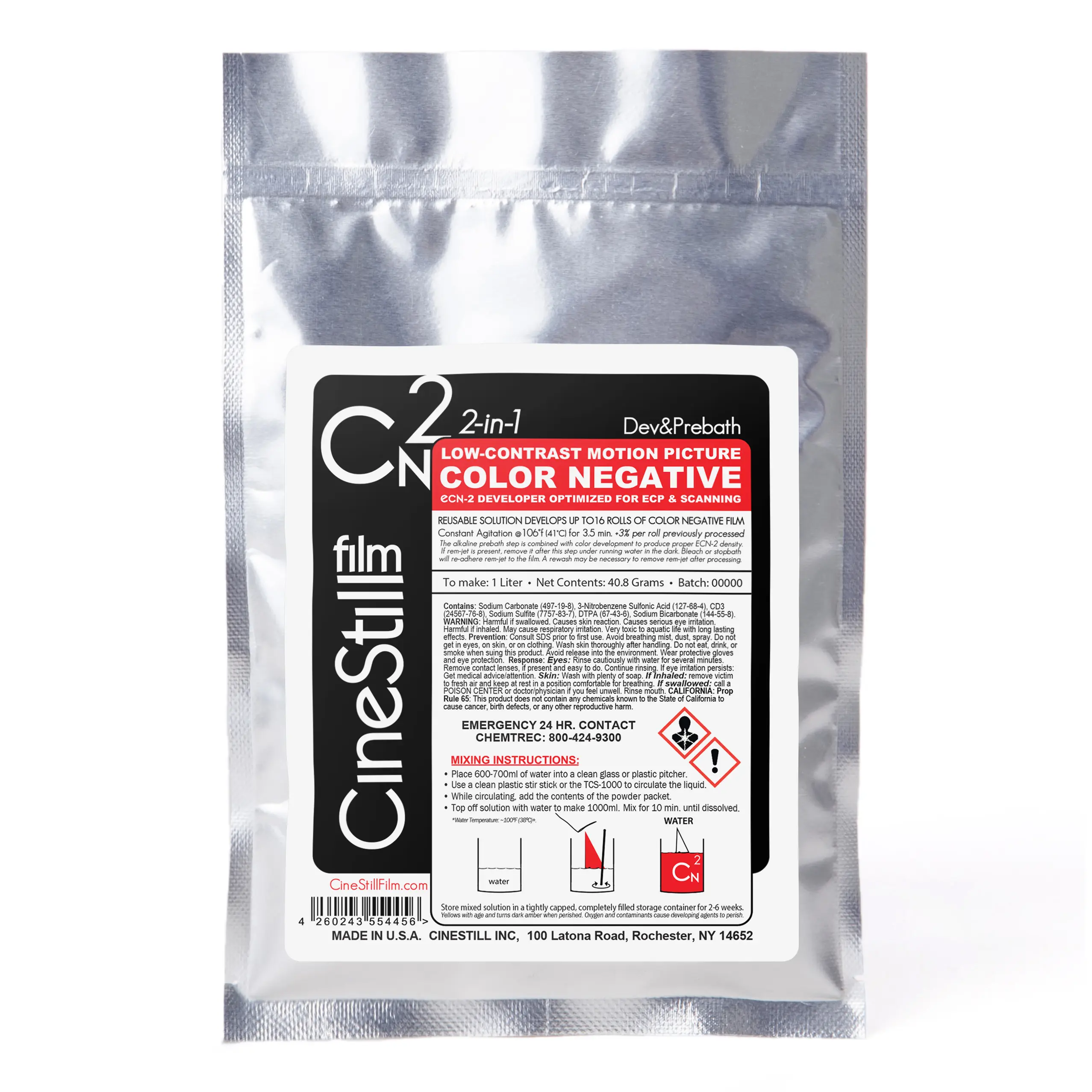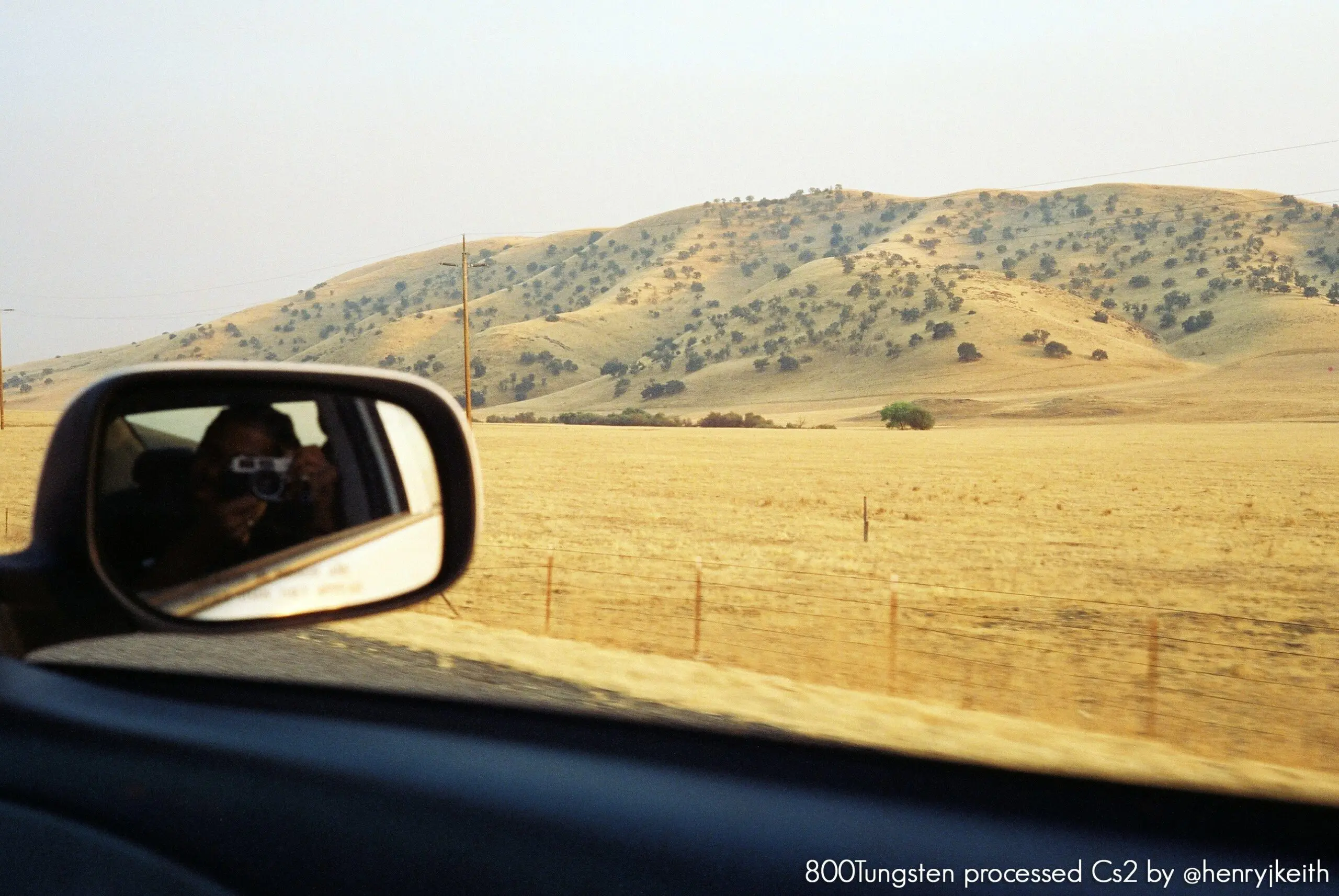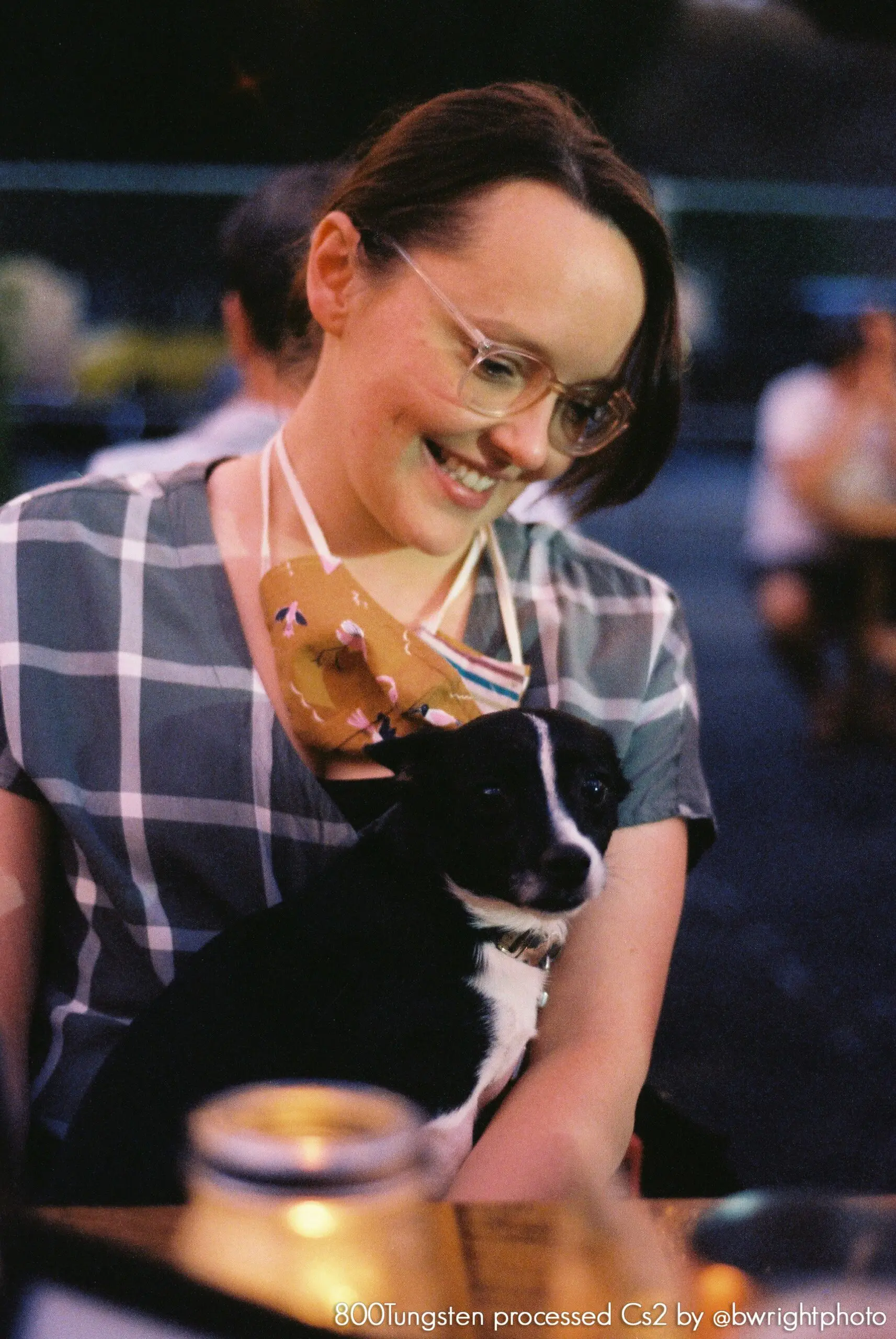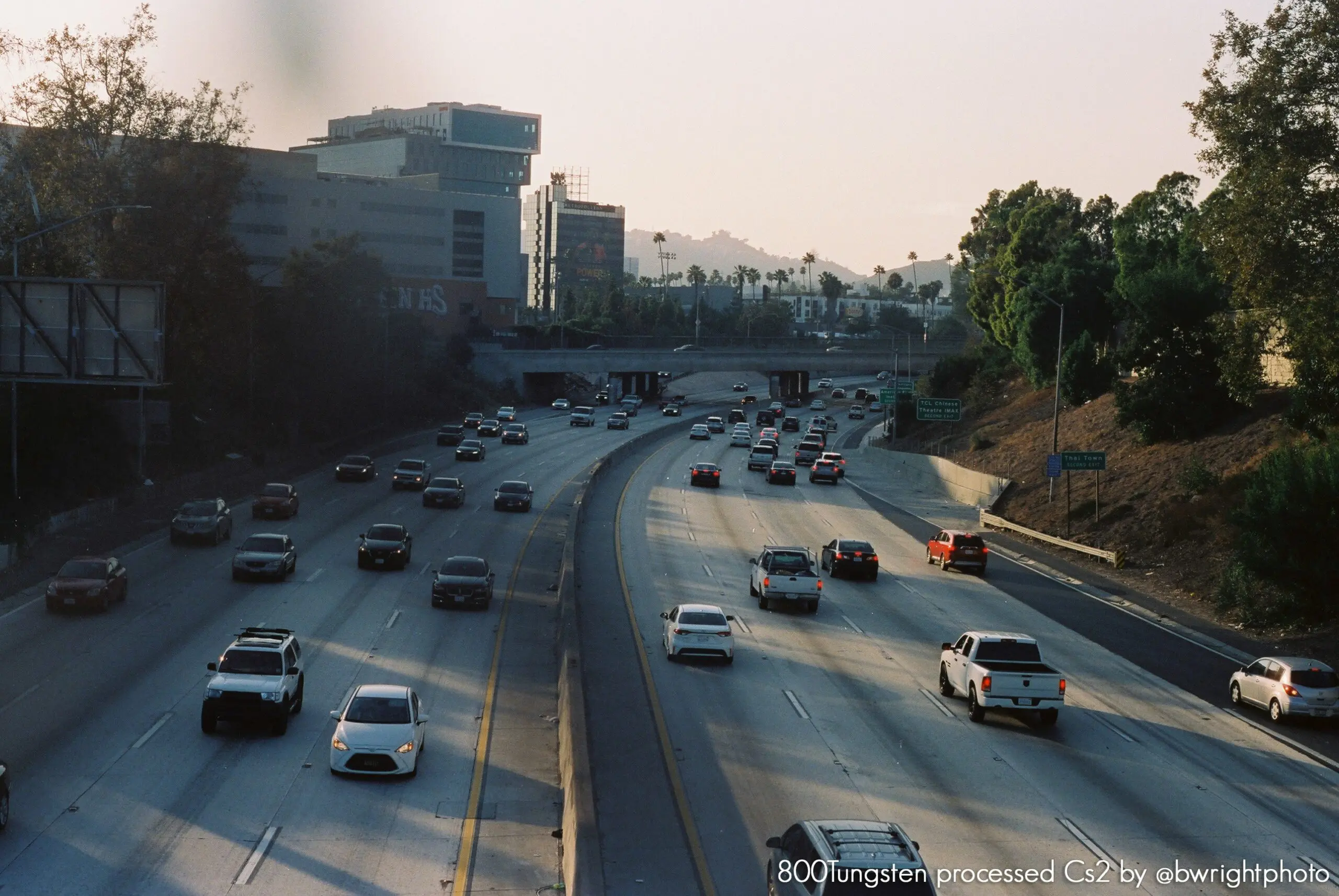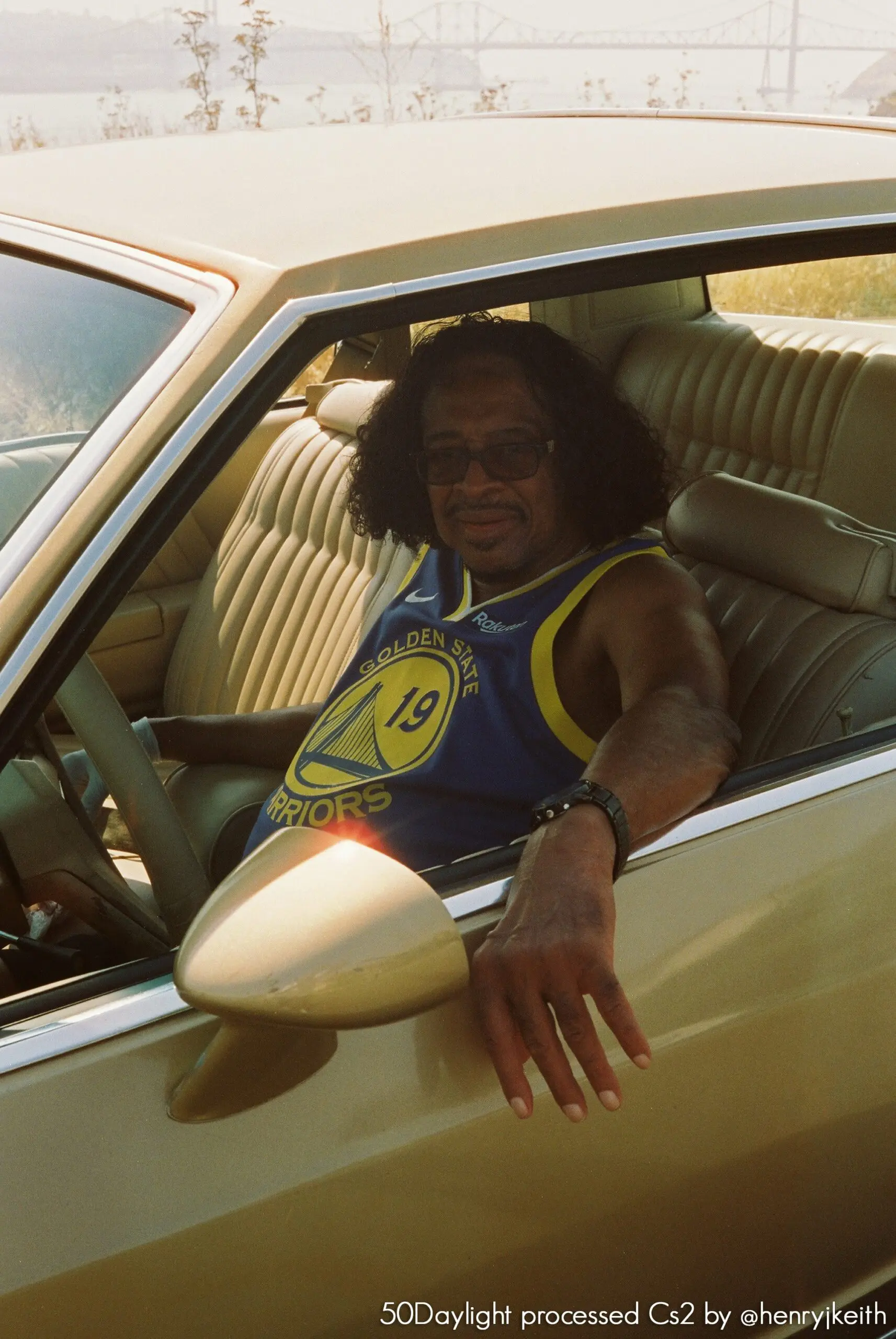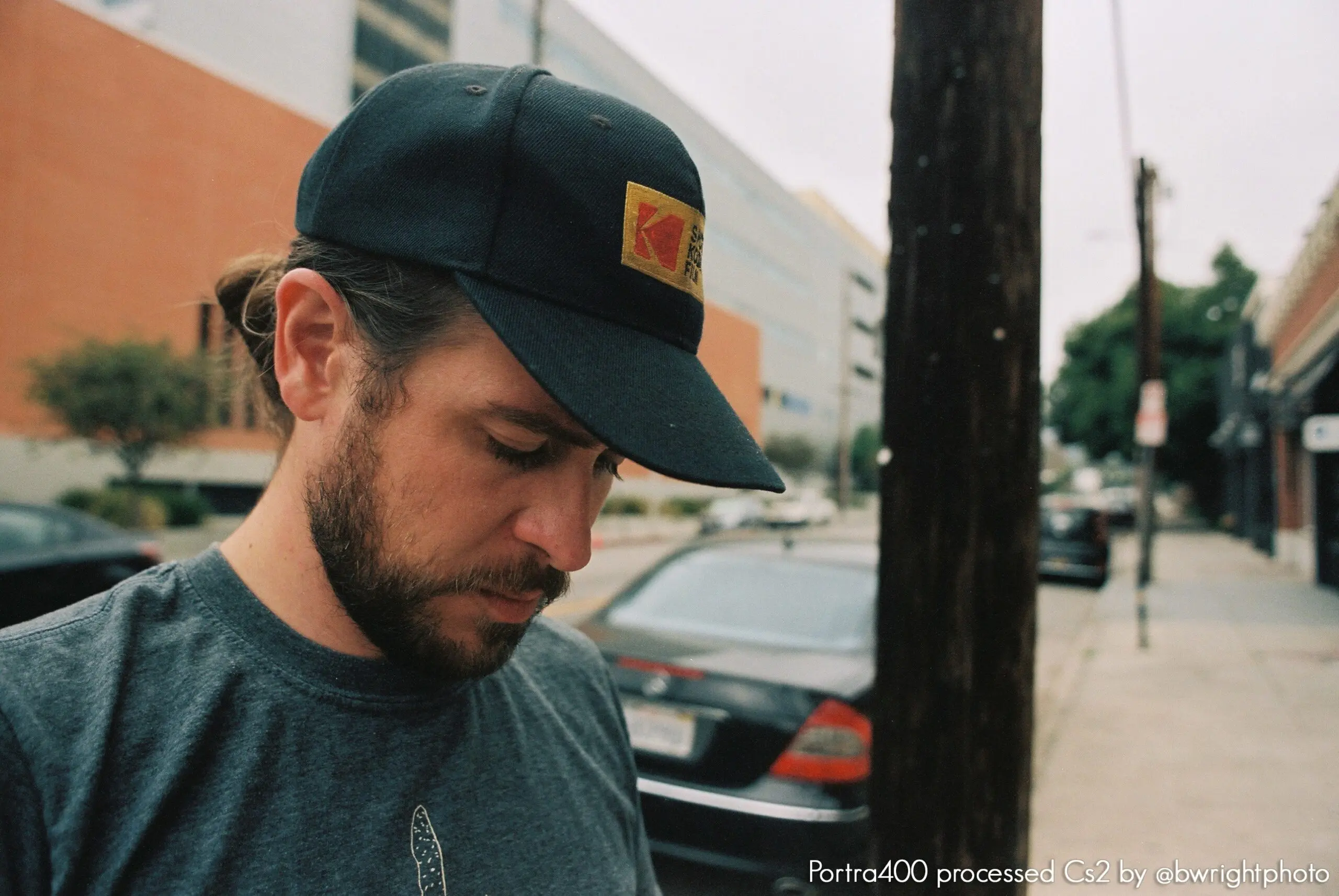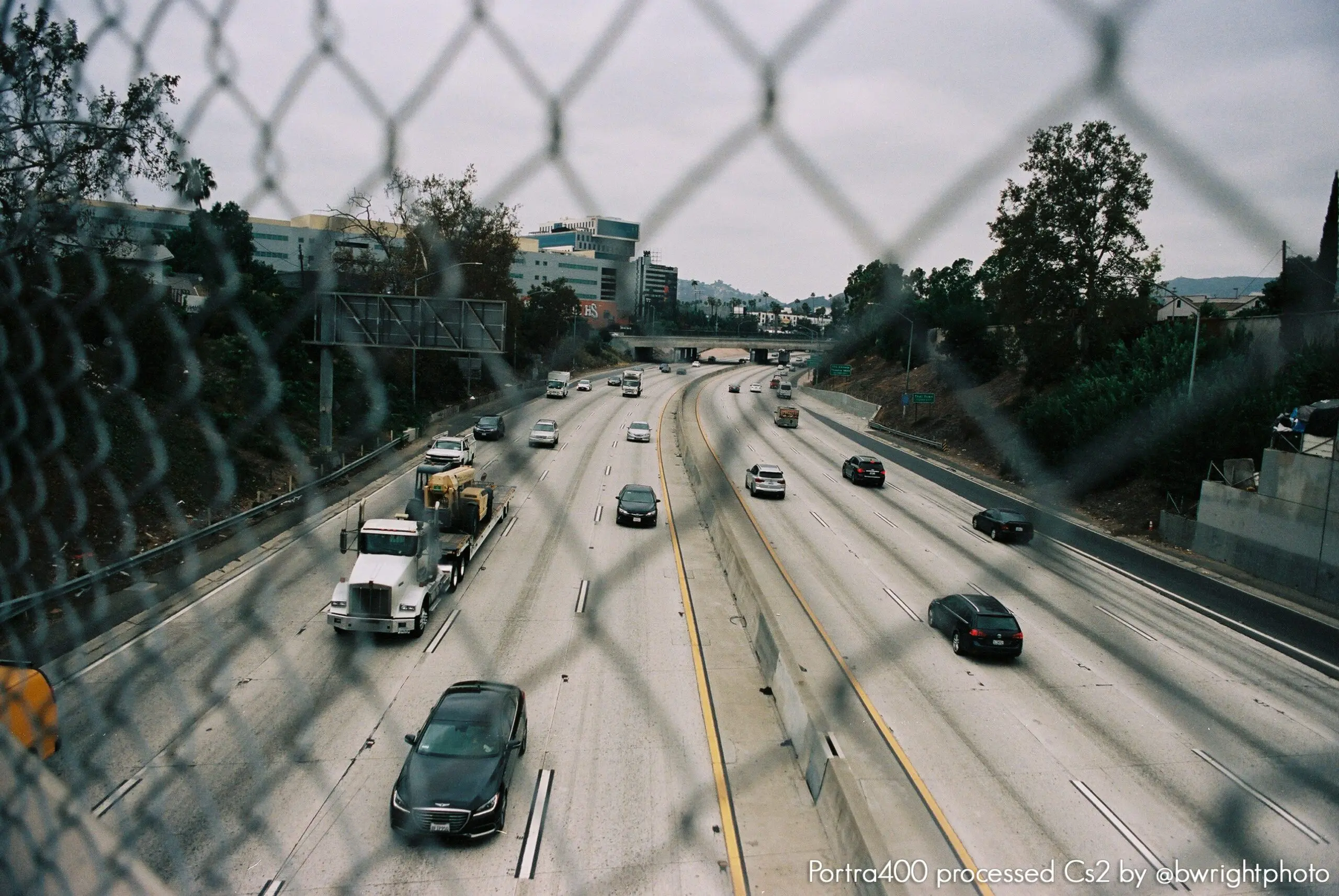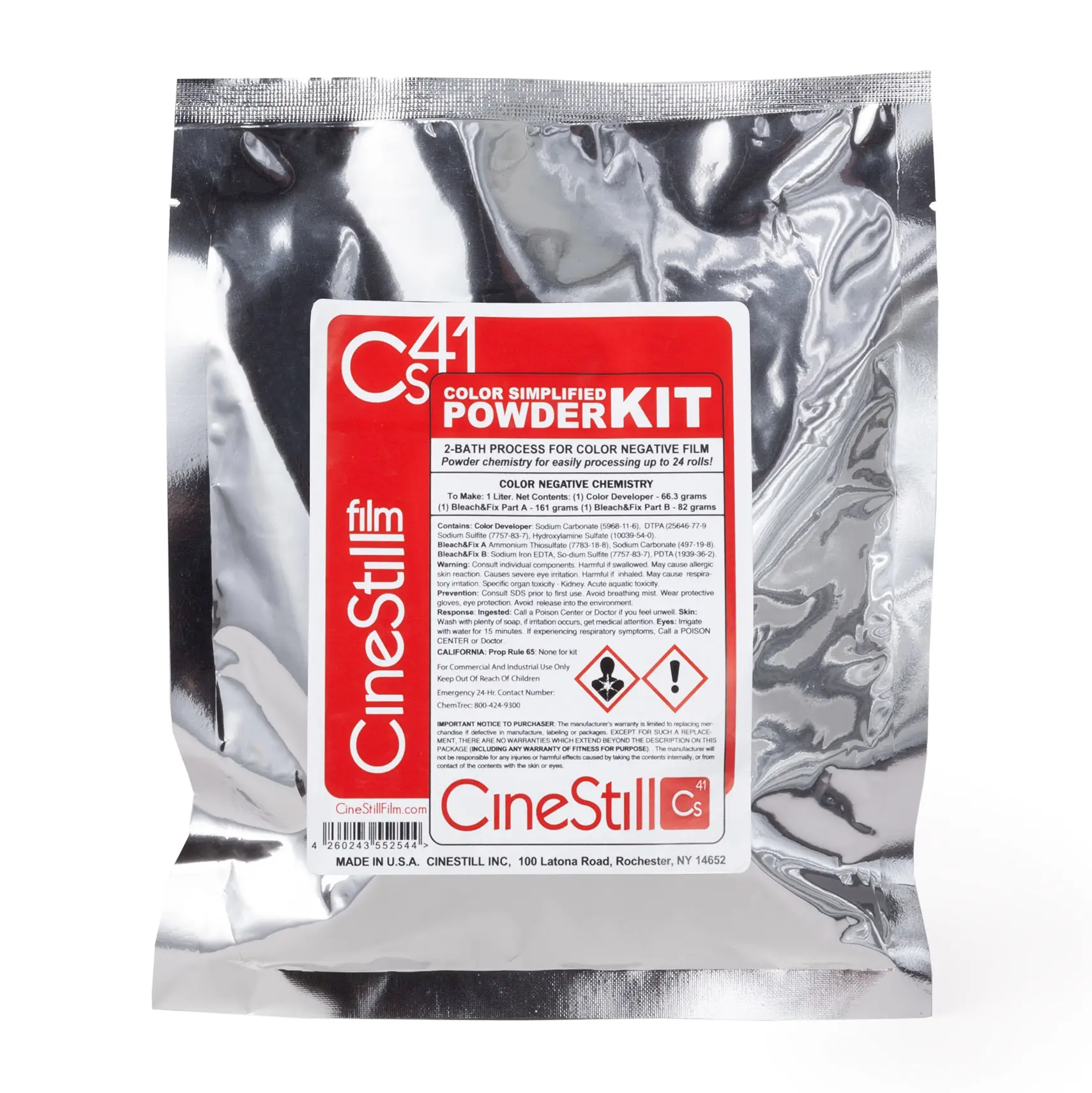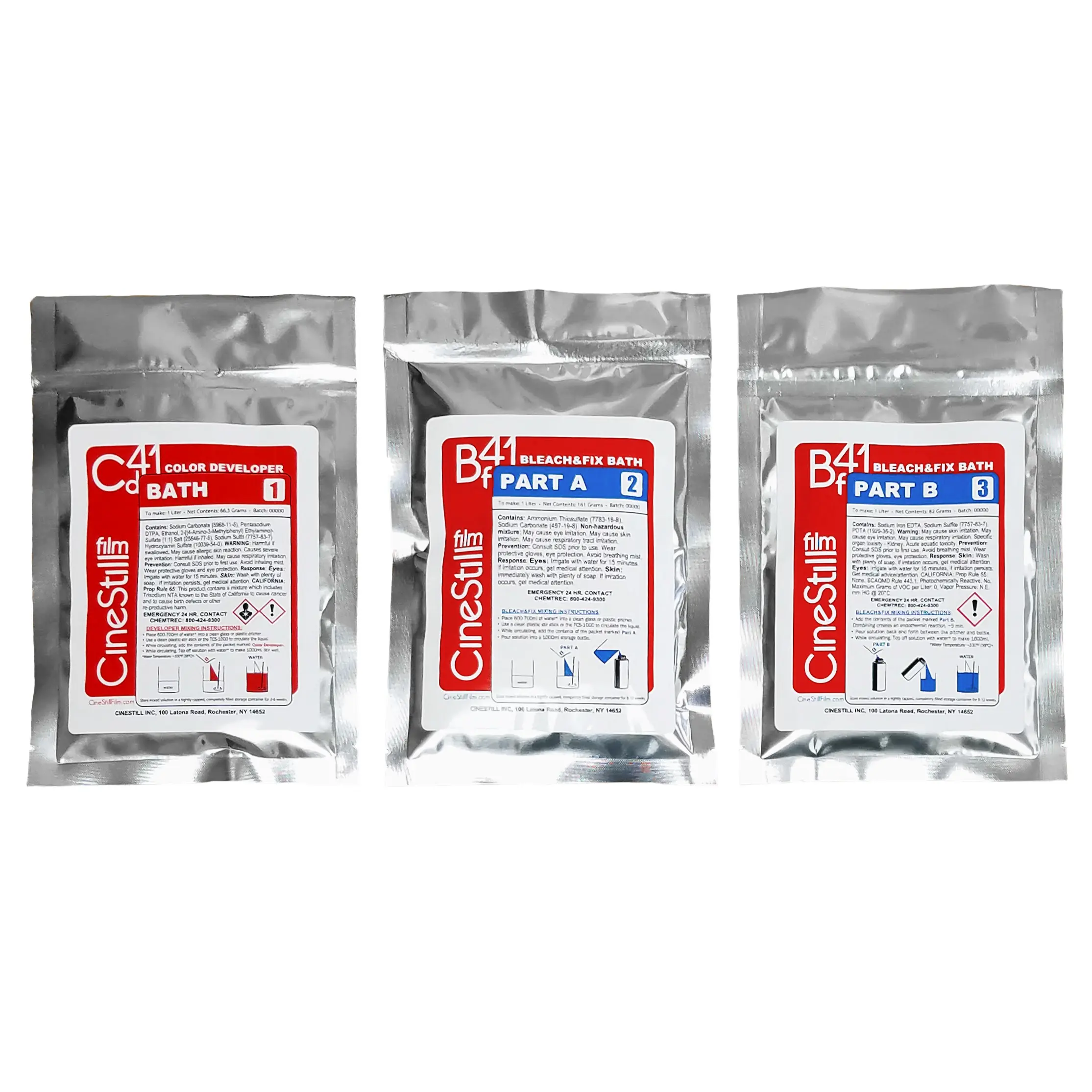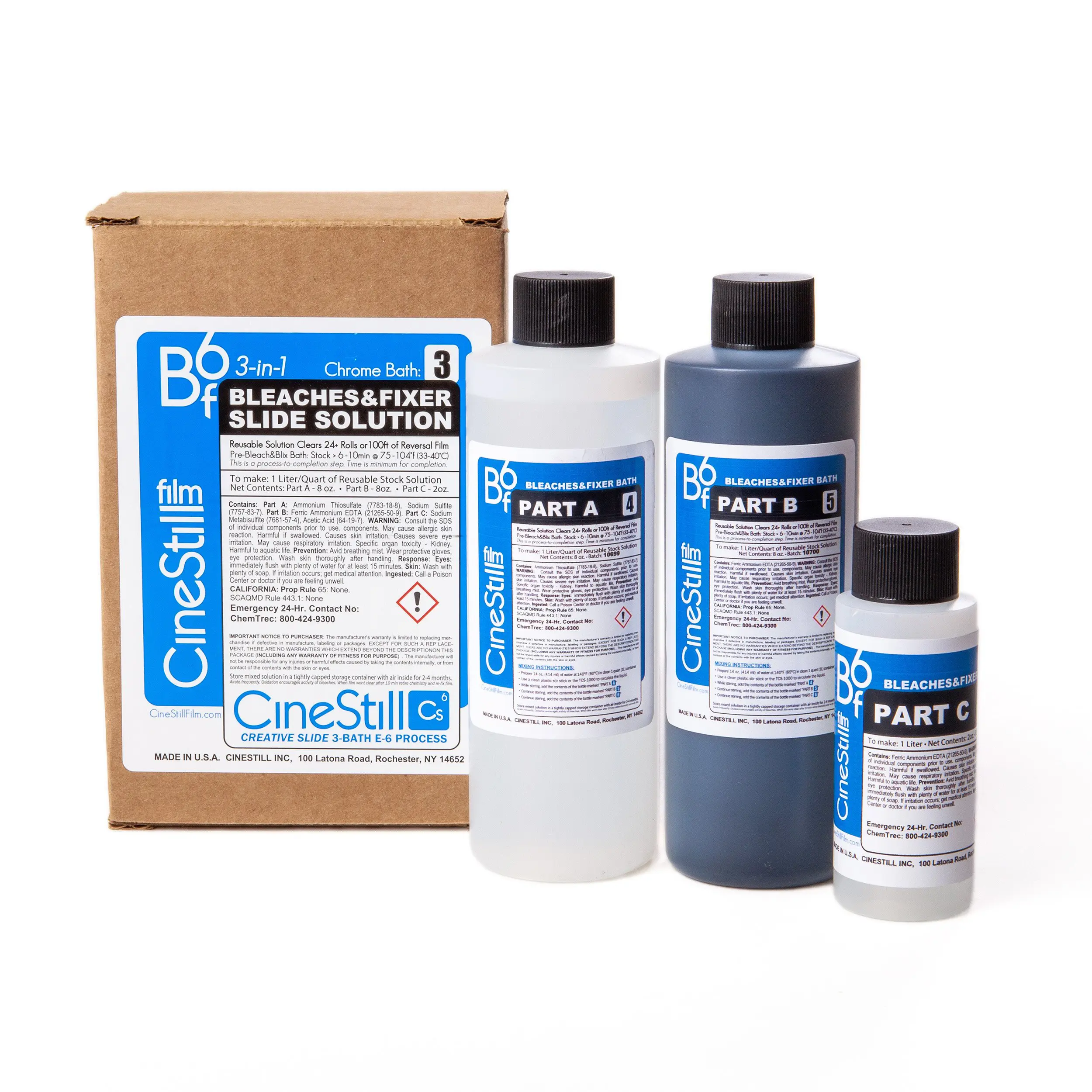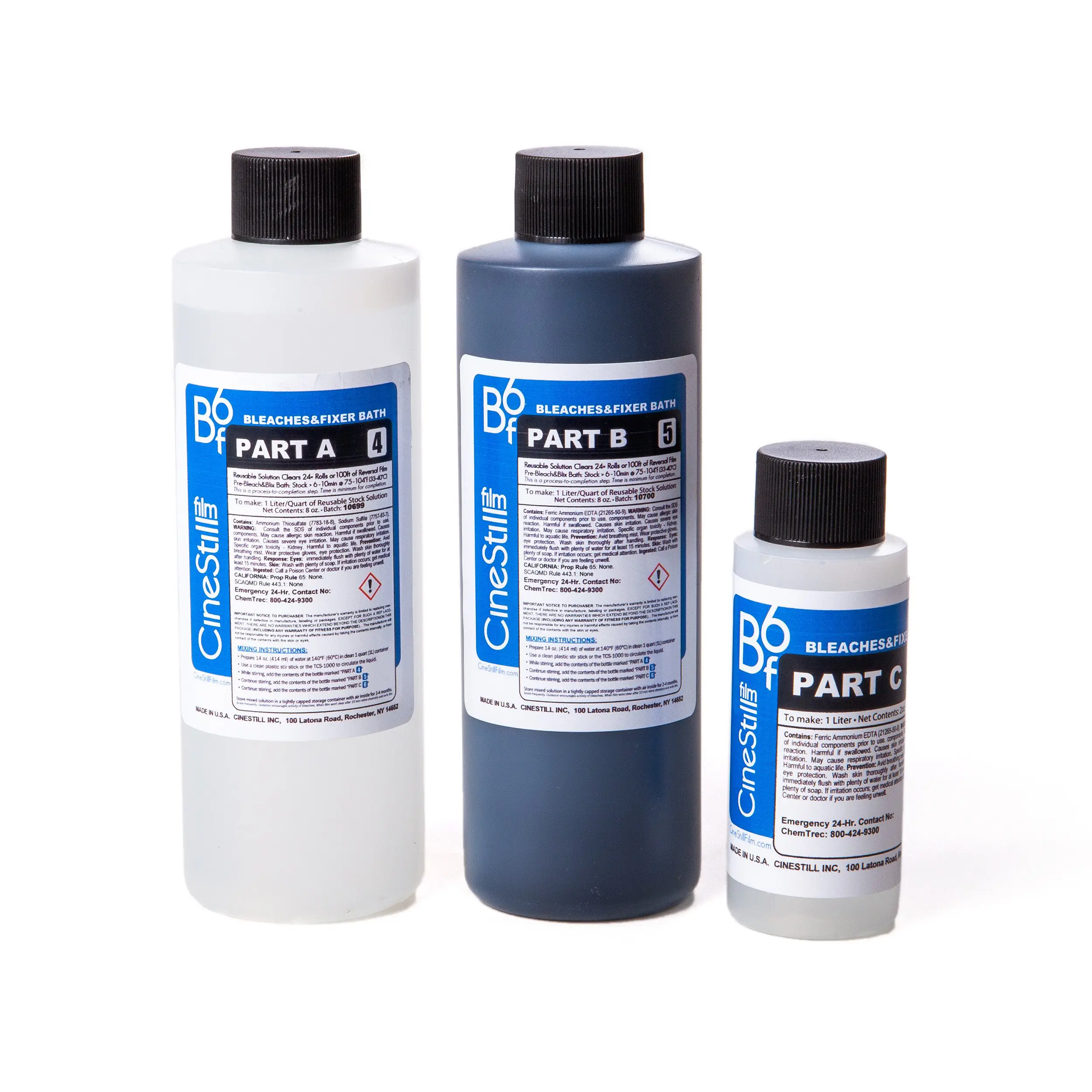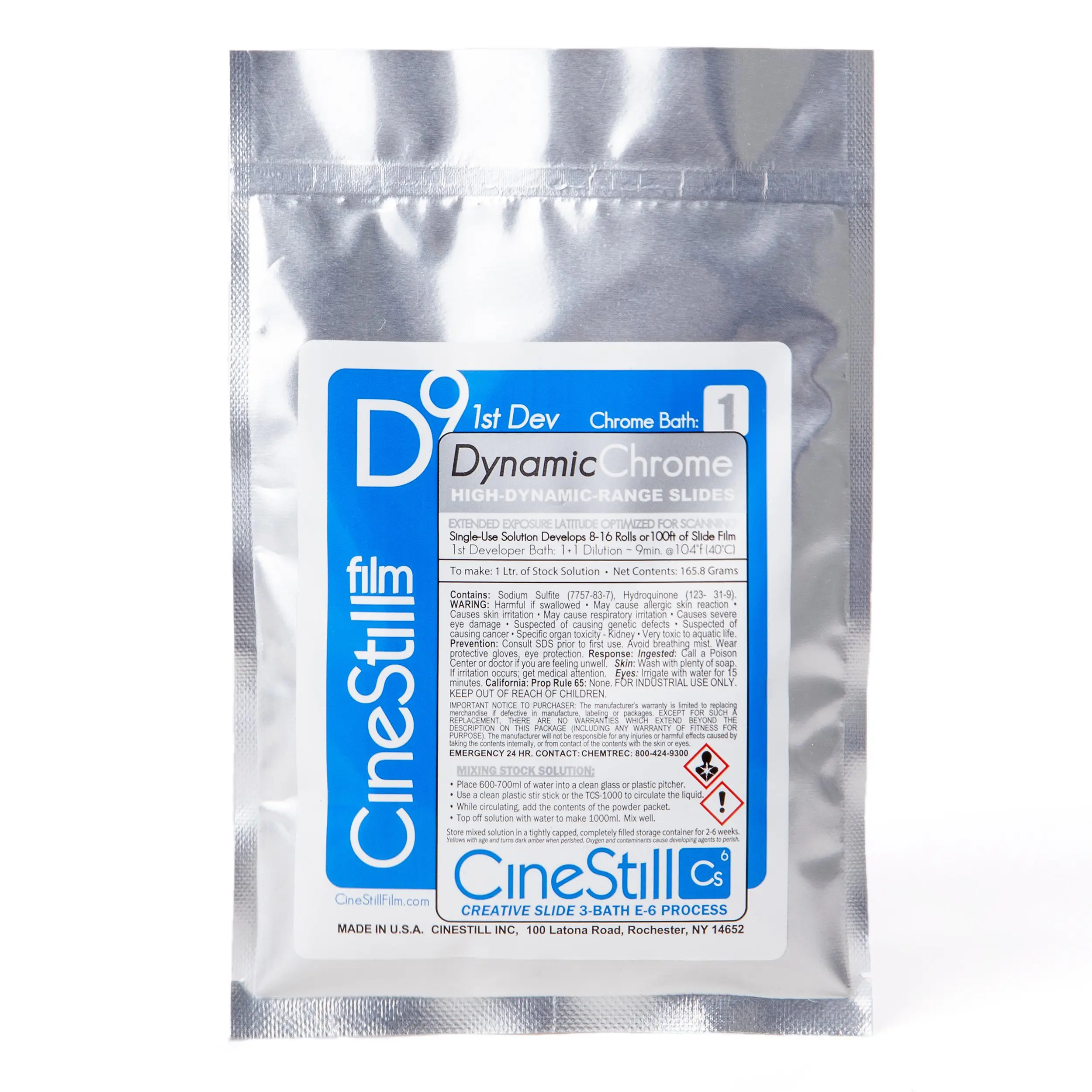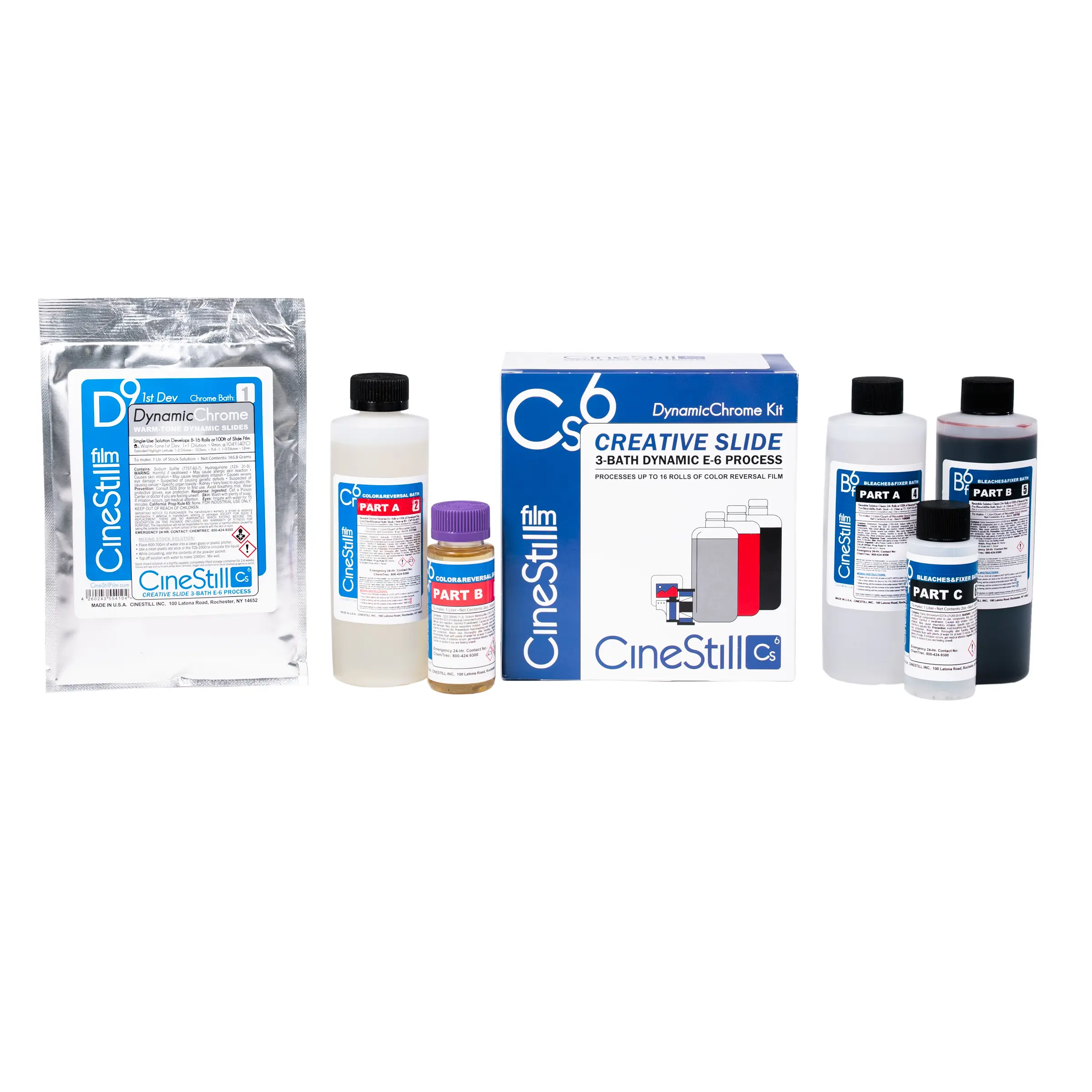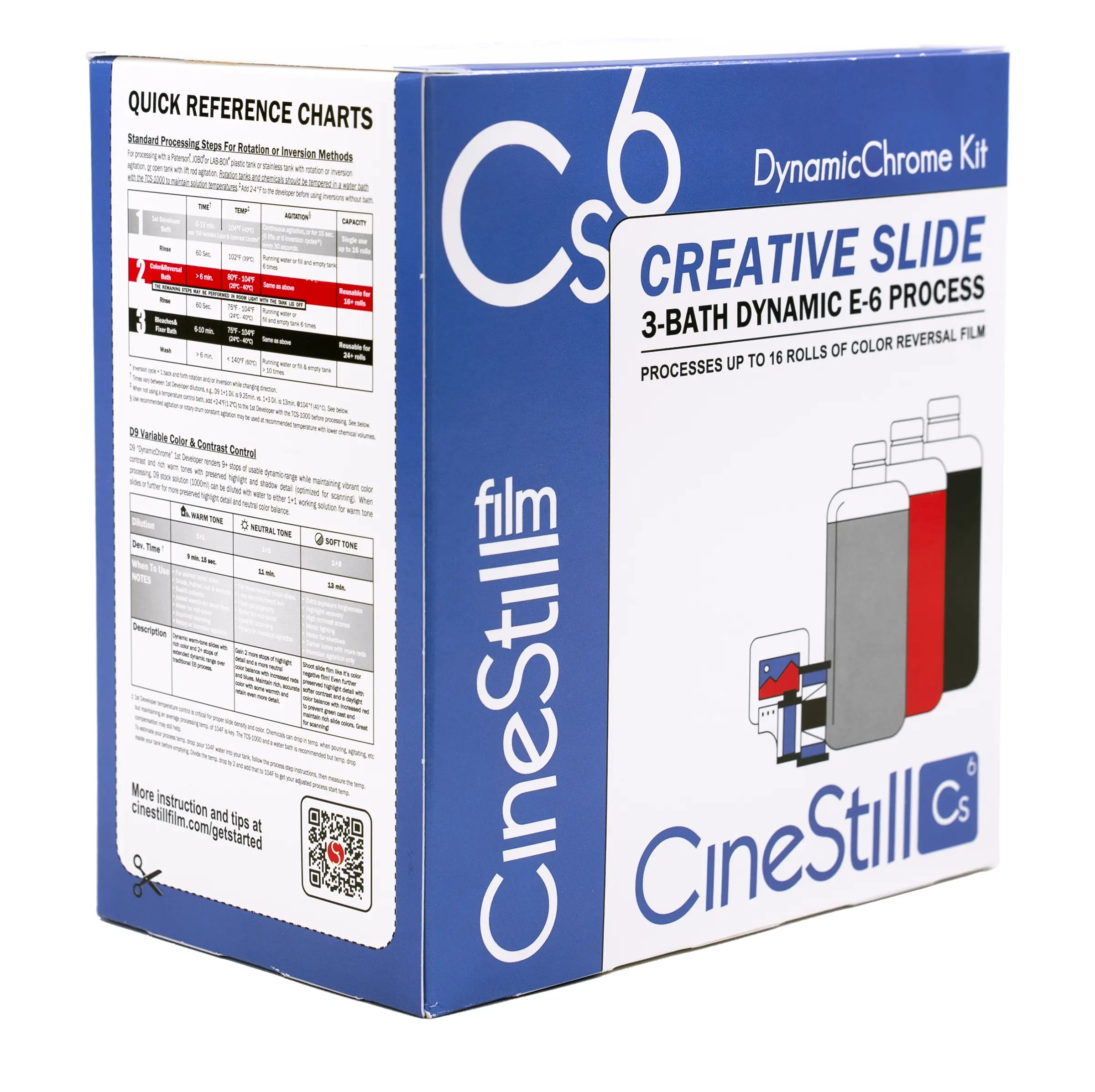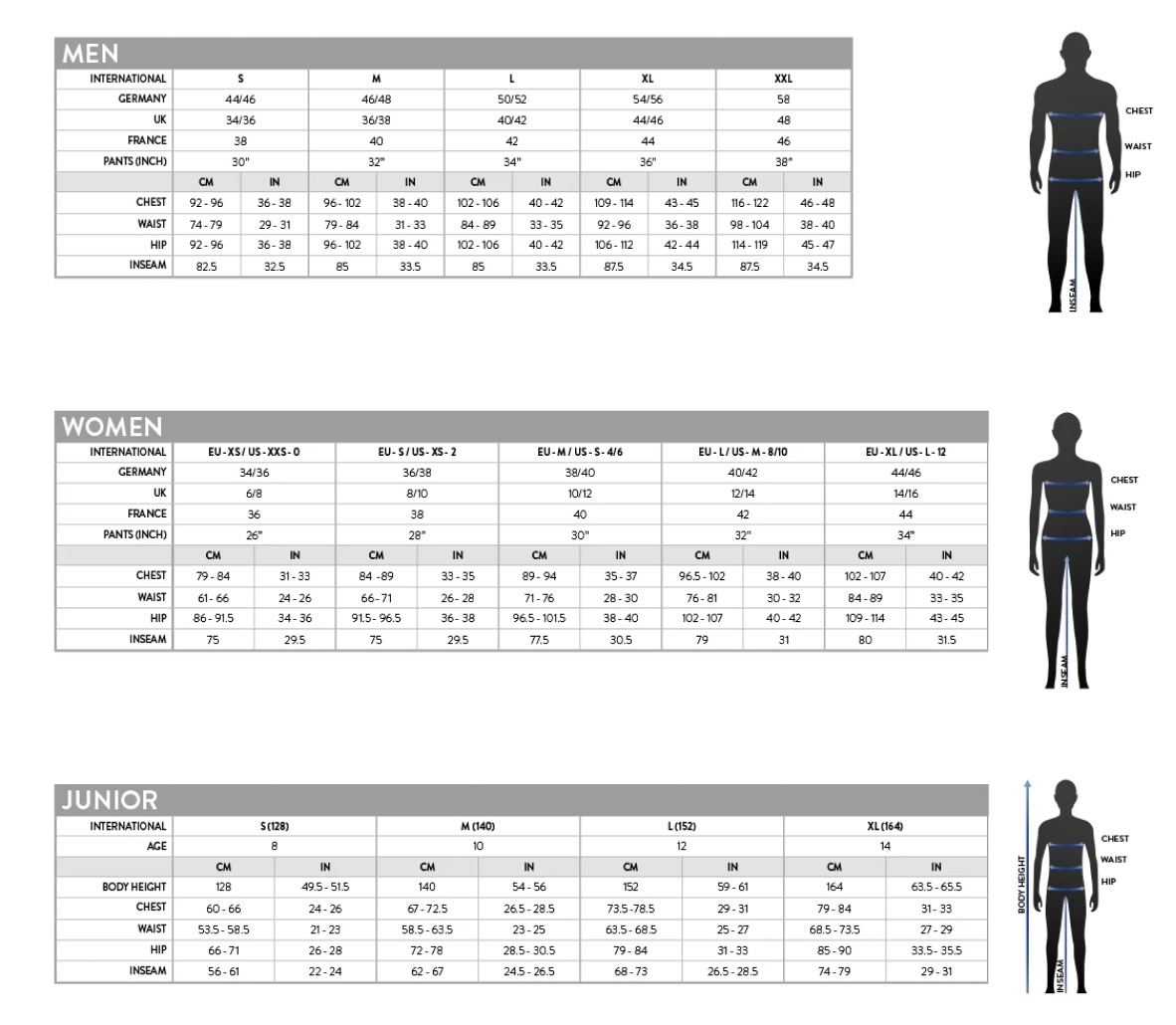★★★★★ 0.0/5
• Great for extremely high contrast scenes or to achieve that cinematic look
• Optimized for motion picture logarithmic scanning and ECP film printing
• Essential chemical agents formulated for motion picture films
• No special processor needed (use standard processing tanks and reels)
• Ships without Limited Quantity Hazardous (ORM-D) regulations
• Excellent for bleach bypass processing with F96 rapid fixer
• Instructions for processing and Push/Pull processing included
• Not compatible with still photography RA-4 chromogenic paper
• More difficult to maintain higher temperature than Cs41
• Less film capacity than the Cs41 process (16 rolls)
• Recommended +1 stop of overexposure
• Thinner low-contrast negatives
Available on backorder
CineStill Film CN2 Color Negative ECN-2 Developer Powder Overview
{{ reviewsTotal }}{{ options.labels.singularReviewCountLabel }}
{{ reviewsTotal }}{{ options.labels.pluralReviewCountLabel }}
{{ options.labels.newReviewButton }}
{{ userData.canReview.message }}

